The Top 10 Overdrive Effects That You Should Consider
We may also earn commissions on purchases from other retail websites.

Last Updated: November 19, 2019
The latest refresh of our chart on the best overdrive pedals out there saw a bit of a shakeup. We removed a couple of pedals, including the original JHS Moonshine. This was replaced by the new JHS Moonshine V2, while we also added the high-end MXR EVH5150 Overdrive and excellent BE-OD from Friedman Amplification.
Looking to take your guitar tone to the next level? Want to add a good dose of crunch and grit to your sound with minimal effort? You probably need an overdrive pedal!
Overdrive is the tone behind most blues, rock ‘n roll and classic rock tracks, and one of the first effects pedals on any guitarist’s pedal board.Naturally, the market is awash with overdrive pedals to choose from. But, with so many, how do you know which are worth spending your cash on?
In today’s article, we are highlighting a selection of the best overdrive pedals around. They range in design, versatility and price, but all deliver the goods! Stick around after the chart for a guide to overdrive pedals and their uses.
Top 10 Best Overdrive Effect Pedals:
| Image | Guitar Pedal / Rating | Summary | Check Price |
|---|---|---|---|
+ - 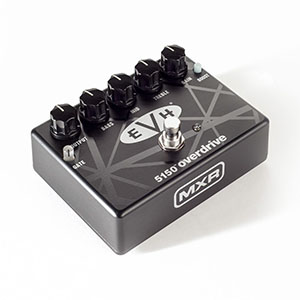 | MXR EVH 5150 Overdrive Total of 4.72/5 | One of the easiest ways to sound like EVH! | |
+ - 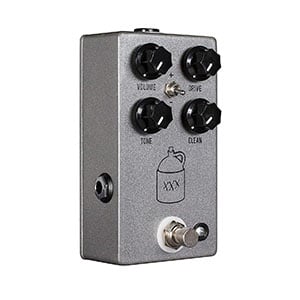 | JHS Moonshine V2 Total of 4.92/5 | A rich, thick overdrive perfect for blues and rock players. | |
+ - 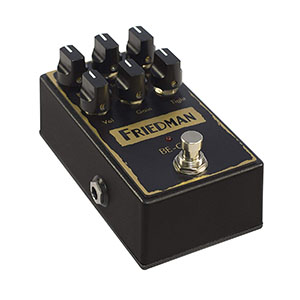 | Friedman BE-OD Total of 4.63/5 | The high-gain pedal version of a classic Friedman amp. | |
+ -  | Fulltone OCD Obsessive Compulsive Drive Pedal Total of 4.63/5 | Well built and designed overdrive that's among the most popular models today. | |
+ -  | TC Electronic MojoMojo Overdrive Total of 4.72/5 | Loads of low end power in a simple pedal that just delivers. | |
+ -  | Boss SD-1 Super Overdrive Total of 4.80/5 | Timeless overdrive with a great tone and a very user friendly design. | |
+ -  | Electro-Harmonix English Muff’n Total of 4.70/5 | On-point reproduction of vintage overdrive effect with impressive amount of tone control. | |
+ -  | Wampler Tom Quayle Dual Fusion Total of 4.67/5 | Pretty unique design that combines two different overdrives for ultimate tone control. | |
+ -  | Ibanez TS808 Tube Screamer Total of 4.63/5 | One of the most legendary overdrive pedals ever made that still delivers. | |
+ - 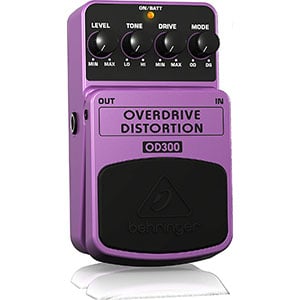 | Behringer Overdrive Distortion OD300 Total of 4.55/5 | Decent performance that comes with a budget-friendly price tag and great features. |
MXR EVH 5150 Overdrive

| Controls: |  |
| Features: |  |
| Performance: |  |
| Value: |  |
Whether you are a committed Van Halen enthusiast, are chasing the famous ‘brown sound’, or just want a versatile stompbox with an abundance of gain, the EVH 5150 Overdrive pedal from MXR is sure to impress.
This American-made box may be one of the more expensive overdrive pedals in this chart, yet the quality and flexibility make it a worthwhile prospect for any rock-focused guitarist.
As highlighted in the complete EVH 5150 Overdrive review, this pedal has no issues in delivering everything from ‘80s crunch to modern melt-your-face metal distortion, while retaining an organic feel. Other impressive features include solid 3-band EQ controls, as well as an intelligent noise gate and a handy +6dB boost switch.
JHS Moonshine V2

| Controls: |  |
| Features: |  |
| Performance: |  |
| Value: |  |
Just like its namesake drink, the JHS Moonshine V2 is warm and smooth with an exhilarating kick. As we highlight in our full review, this pedal’s tones are perfect for rock, blues, and hard overdriven styles.
Like the original version, the Moonshine V2 offers tone, volume, and drive knobs along with a unique ‘proof switch’ to help shape your sound. The added clean dial allows players to blend their clean signal with the driven sound for smoother breakup tones.
While it’s not a transparent overdrive, this pedal presents a distinctive, warm character that’s sure to please nearly any guitarist. Its top-notch tones and versatility merit a look from any player in need of a new overdrive pedal.
Friedman BE-OD

| Controls: |  |
| Features: |  |
| Performance: |  |
| Value: |  |
Friedman Amplification’s BE-100 head has become a classic thanks to its thick, creamy British tube overdrive tones. The BE-OD is Dave Friedman’s way of distilling those sounds into a more manageable – and much more affordable – package.
As we highlight in our full BE-OD review, this pedal nails the saturated British tones of its bigger brother while offering much more customization than the full head. Active EQ, presence, and tight controls allow you to tailor your drive sound exactly the way you want it.
While it can be a bit heavy for players who just want lighter crunch, the BE-OD is the perfect pedal for guitarists who need heavy, tube overdrive tones at a more accessible size.
Fulltone OCD Obsessive Compulsive Drive Pedal
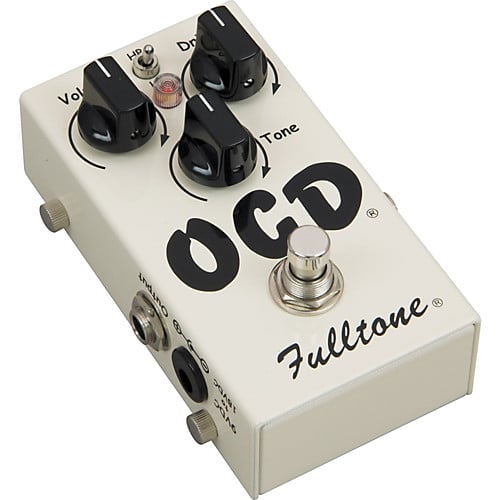
| Controls: |  |
| Features: |  |
| Performance: |  |
| Value: |  |
OCD has become one of those overdrive pedals which was living on the margins of the market, only to be yanked into the center of attention in a matter of days. There’s a perfectly good reason for that. Fulltone gauged the market, figured out what the scene needed at the moment, and hit the nail on the head with their OCD series.
Obsession is just one in a relatively long list of models from this family, and it’s bringing that same killer overdrive with a pinch of its own character in there somewhere. The first thing that makes the OCD Obsession worth it is the gain transition, and how they’ve solved gain in the first place.
There’s an abundance of it, but it’s so easily controllable that it’s scary. You can dial anything from a slight, refined overdrive to a full blown heavy rock vibe. Best thing of all? There’s no impact of transparency of your signal nor its raw color. Fulltone definitely delivered again.
TC Electronic MojoMojo Overdrive
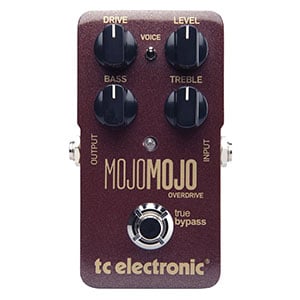
| Controls: |  |
| Features: |  |
| Performance: |  |
| Value: |  |
MojoMojo by TC Electronics is definitely among the more interesting overdrive pedals you can get in the affordable range. It comes in a sturdy enclosure and features a lot more than the bare bone design you would expect. Frankly, we are surprised that TCE didn’t include their trademark TonePrint technology in this package.
However, it’s perfectly fine the way it is. You have your standard two band EQ to work with, along with level and Drive controls. Right in the middle of all these knobs, you’ll see a Voice switch. What this does is impact the mid frequencies, allowing you to be sharper or more loose in that part of the range. While it’s definitely a neutral overdrive, the versatility it offers is worthy of respect.
With some imagination, you can dial in a whole range of tones using just this pedal alone. Add a true bypass into the mix, and you have a formidable stompbox built for the masses. That’s the type of policy we can stand behind.
Boss SD-1 Super Overdrive
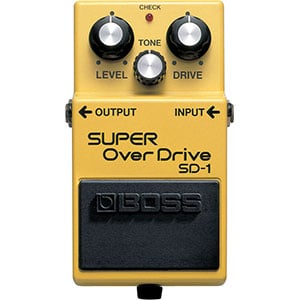
| Controls: |  |
| Features: |  |
| Performance: |  |
| Value: |  |
Depending who you ask, some guitar players will tell you that Boss made a name for themselves by supplying the world with affordable overdrive pedals that just work. There’s a lot of truth in this statement and SD-1 is a perfect example why. It’s one of the most basic pedals in terms of controls and features, it’s affordable, and it brings on the thunder in ways which will make you grin involuntarily.
That’s about as much as you can expect from an effects pedal. SD-1 was first designed over two decades ago, yet it still holds its ground as one of the go-to choices on today’s market. Overdrive it offers is balanced, a bit chaotic but still within the limits of taste.
It’s a Marshall Plexi in a box. If you need a standard, reliable overdrive and you are working on a tight budget, Boss SD-1 is one of the best choices you have. Whether you use it with a clean or overdrive channel, the quality is still there.
Electro-Harmonix English Muff’n
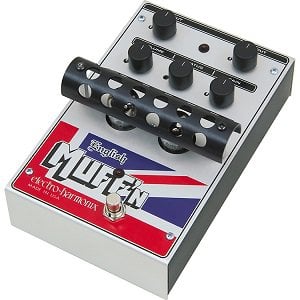
| Controls: |  |
| Features: |  |
| Performance: |  |
| Value: |  |
If you’re looking for a specific sound reproduction, reminiscent of the classic British guitar amp’s tones. The Muff’n is a unique provider when it comes to that, a fan-favorite of many, truly one of the best overdrives out there, even if you’re just getting familiar with its sound.
Utilizing vacuum tubes in order to do what it does, it mimics the richness and saturation of the iconic British valve sounds. The controls on this pedal feature Low, Mid and High tone modulation, and Volume and Gain modification. This masterpiece offers exactly what it advertises, lush sound enrichment used by the likes of AC/DC, you’ll achieve that exact same tonal output when playing around with the various control settings.
The Muff’n is an immaculate pedal manufactured by EH, targeting fans of specific old-school sounds, it fits in to a standard of its own. Well worth it’s price if you’re on the hunt for something different.
Wampler Tom Quayle Dual Fusion
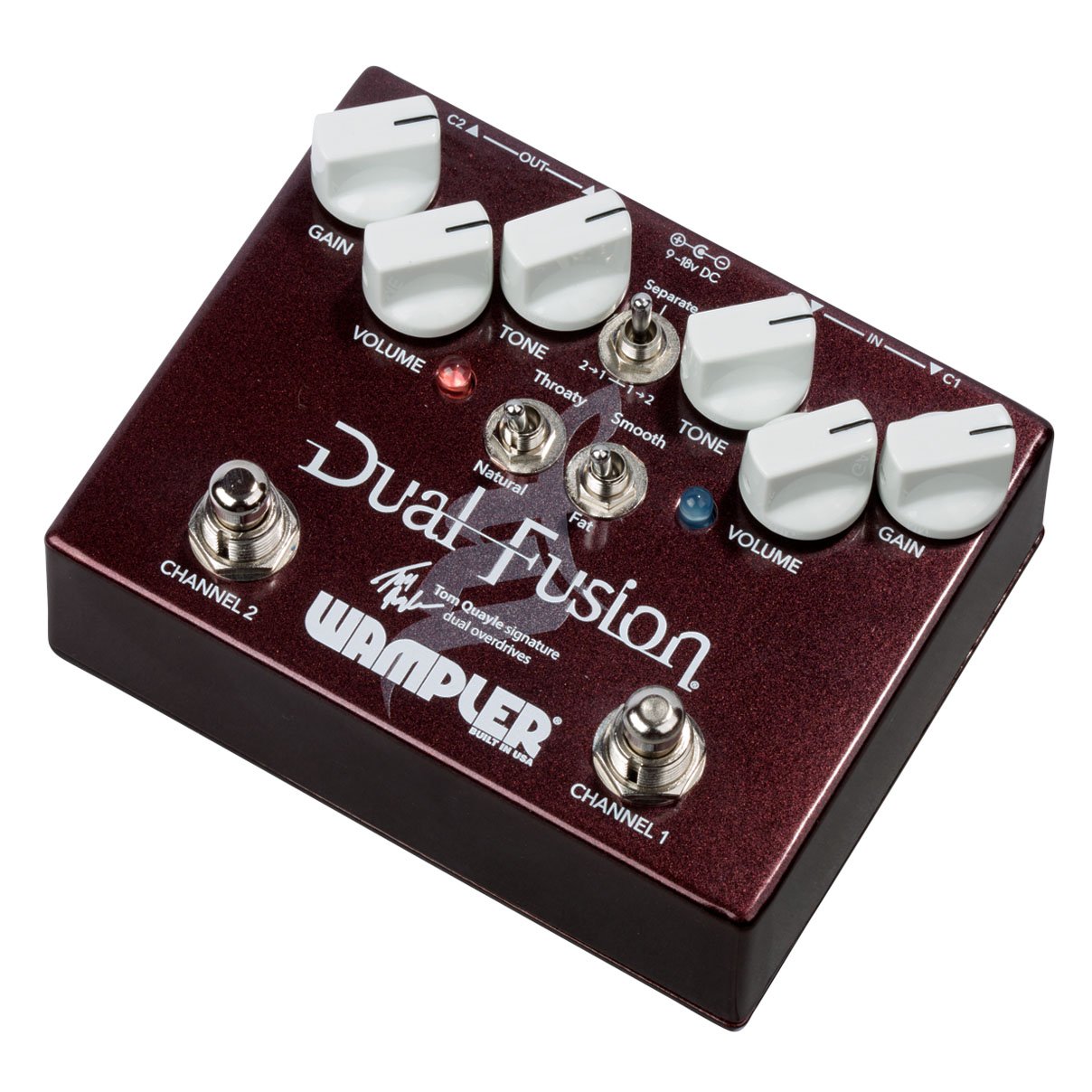
| Controls: |  |
| Features: |  |
| Performance: |  |
| Value: |  |
One thing that you have to appreciate about Wampler is their eagerness to reach out to talented musicians and cooperate with them to design new pedals. Their Dual Fusion overdrive is the fruit of one such effort.
The pedal itself is pretty complex for an overdrive, but that is mostly because it’s a 2 in 1 type of deal. If you look closely, you will see that there are actually two clusters of controls mirrored don each side of the pedal. One side is labeled as Modern while the other is leaning more towards the vintage type of tone.
Needless to say, the fusion of these two sounds is amazing, while the authenticity of tone of each mode is tangible as soon as you crank this bad boy up. So, is the end product worth the investment and the necessary learning curve? We’d say the answer is yes as long as you’re looking for something that transcends tube screamers or similar simple designs.
Ibanez TS808 Tube Screamer
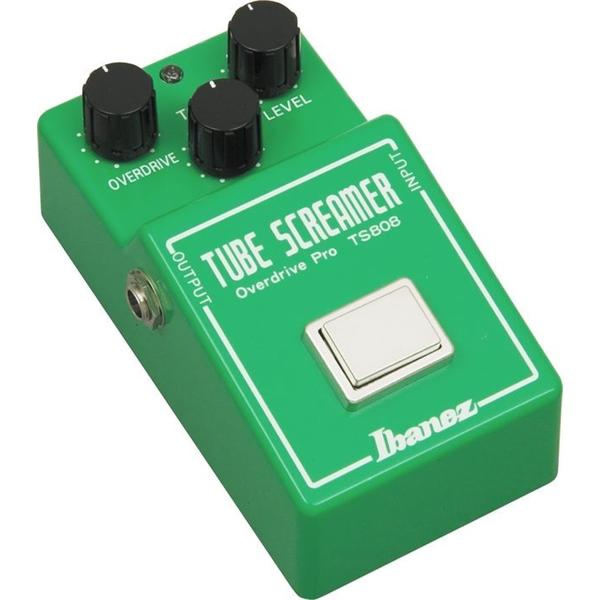
| Controls: |  |
| Features: |  |
| Performance: |  |
| Value: |  |
When standalone overdrive pedals first appeared, there were several different designs available. One that quickly broke through to the top, and stayed there decades to come, is the Tube Screamer. The company who’s responsible for this awesome pedal is Ibanez, and the first one they’ve released was the legendary TS808 back in the ’70s.
Today, you can get the reissue of that same iconic overdrive which has pretty much shaped the world of guitar distortion. Ibanez has decided to bring back the legend while trying to keep the changes at a bare minimum. Knowing that this pedal, in its original or revamped form, has been on pedalboard of many iconic guitar players is all the proof you need of its performance.
It’s a simple device with few controls, but the thing just brings on the thunder like no other pedal can. If you want to taste what vintage guitar overdrive is all about, this is the pedal to go for. You will not be disappointed.
Behringer Overdrive Distortion OD300

| Controls: |  |
| Features: |  |
| Performance: |  |
| Value: |  |
Behringer’s ability to strip create a formidable effect pedal, and then strip it down until it’s affordable is not a secret. Their pedals are always going to have a market, and Behringer will probably continue to reward that gratitude by launching even more pedals which are just amazing at their very core. Since overdrives are among the easiest pedals to design, it’s no wonder that Behringer currently offers a very affordable yet very capable model.
We are talking about the OD300. This model represents a fusion between overdrive and distortion, and completely blurs out the line where one ends and the other starts. OD300 is easy to use and packs a decent range of tone shaping capabilities.
It’s definitely not something you would want to do a world tour with, but for practice or occasional gigging, it is more than fine. Those working musicians who are operating on a super tight budget will appreciate a solution such as this one.
What Exactly is the Overdrive Effect?
Overdrive is a staple of modern electric guitar tone shaping. An overdrive pedal is used in just about any genre of music that involves electric guitars – and electric bass for that matter. So much so, that overdrive is often considered the first guitar effects pedal a player should invest in.
Before we explain the beauty of an average overdrive pedal, let’s find out how this effect came to be and where it all began.
As you may already know, overdrive was first discovered when electric guitar pioneers began pushing tube amps outside their comfort zone. Once overloaded, the sound of the amp would start to distort, creating the crunchy effect that we know as overdrive.
This method is still considered to be the best way to achieve organic overdrive. However, not everyone can or wants to push their amp to such extremes on a daily basis. This is where overdrive pedals come in. Manufacturers soon developed methods to recreate that clipping effect and pack it into a convenient pedal format, giving guitarists overdrive on tap.
Difference Between Overdrive and Distortion
One common misconception you often hear is that an overdrive pedal is the same as a distortion pedal. While they share similarities and belong to the same category of pedal – along with fuzz pedals – they are not the same thing.
Overdrive pedals have tamer amounts of gain, offering a smoother, warmer broken-up tone. They tend to preserve the guitar’s natural tone and retain the player’s dynamics. On the other hand, distortion pedals offer an abundance of gain, completely distorting the sound, delivering high aggression to the tone.
This is why overdrive is usually better for genres such as blues, indie and classic rock, while distortion is more associated with heavy modern rock and metal. If these are your genres, you should definitely read more about distortion pedals.
What Makes a Good Overdrive Pedal?
The beauty of an overdrive pedal is that they don’t need to be complex. On the contrary – simple is almost always better. When it comes to what makes a good overdrive pedal, it all comes down to the circuitry inside.
As you can’t do much about the circuitry, look for a pedal that offers the controls you need. Some may just offer the basics, while others look like mini computers, allowing you complete control over your sound. While we appreciate simplicity, a good selection of controls is essential.
How to Use an Overdrive Pedal
Using an overdrive pedal might seem like a simple enough task. After all, these pedals are about as simple as it gets, right? Not necessarily. One of the most common ways to use overdrive is to simply plug the pedal into your signal chain, dial in a tone you like and go with that. However, once you start thinking outside the box, you will find that there is so much more to these pedals.
Here are two main overdrive scenarios:
- In Addition to Your Amp’s Overdrive
The idea behind this method is to boost your amp’s natural sound by utilizing the additional power of your pedal. Dial every knob on the pedal to its lowest value before you start. Without even touching anything else, just start to slowly add volume (or level depending on your specific pedal). You should hear your amp’s overdrive channel start to sound hotter and wider.
You can experiment by adding a bit of grit and changing other parameters. One key thing is to take things slow – don’t go overboard. Going too far can even mess up your tubes, which is something you want to avoid.
- As a Standalone Effect
In this case, you will want to have your amp set on the clean channel. Turn on the pedal and apply the same steps as we have described above. When dealing with a clean channel, you might have to be more liberal with your volume and overdrive levels, as you are building the overdrive tone from the ground up. Pair it with select modulation, such as a good chorus pedal and you will have a great platform to work with.
How Practical are Overdrive Pedals?
Overdrive pedals have found their purpose in just about any genre of music, spanning from jazz (yeah, seriously!) to heavy rock. The fact that you have the liberty to add a tiny bit of grit or as much gain as the pedal can offer, means that you can do just about anything you want to. Is the pedal itself not enough for you? Simply punch that dirty channel button your amp and you should be good to go.
At the end of the day, you can squeeze a lot of performance out of an overdrive pedal. It may take some time to figure out exactly how to tap into that potential, but it is definitely there. This makes it one of the pedalboard essentials.
Vintage vs. Reissue
When dealing with some of the more iconic models, you will often hear people talking about vintage pedals versus modern reissues. If this is your first overdrive pedal, this discussion shouldn’t really bother you, as the difference between these are miniscule from a practical point of view.
Those who are heavily invested in their guitar tone will notice pros and cons to both. However, we are talking about guitar players who can discern nuances to a point where even the smallest difference has high impact.
Why Cheap Overdrive Pedals Can Be Good!
Another awesome thing about overdrive pedals is that they don’t have to be expensive at all. For example, Boss offers a selection of highly-rated overdrive pedals that work very well, but come in at under fifty bucks – very reasonable.
Expensive models are usually boutique designs, which implies sophisticated analog circuitry and a bunch of other extras. This is great if you are in the market for a high-end tone, but it’s not necessary to spend that much.
The Final Word
The chart above should hopefully satisfy your overdrive pedal curiosity – whether you are planning to buy one or just reading up what’s on offer. We have covered some vintage masterpieces and heavily modernized pedals rich with variety. As with all our charts, the list is subject to change – expect more additions over time, adapting to the ever-improving world of guitar pedals and what they can offer.



Logan D says
Great article but the last one is Boss, not Behringer.
Thomas Hansen says
In the review of TC Mojo Drive, you say that you are surprised that the Tone Print feature is not available. I don’t think that is so strange, as it is an analogue pedal, and therefore it is not possible to modify the parameters and ranges digitally via Tone Print.